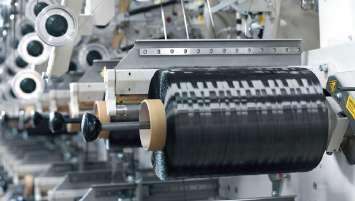COVER STORY
15
DIGITALISATION AS AN OPPORTUNITY FOR THE TEXTILE INDUSTRY PORTER GALE The textile industry includes a vast array of sub-industries like fashion, interior design, healthcare and even automobiles. The rapid advancement of the digital world has seen aspirant textile companies achieve Industry 4.0 leadership and implement automation across the entire textile fabrication process. How will the textile sector achieve Industry 4.0 leadership? Through outsourced solutions that are available for digitization, IoT integration, Artificial Intelligence and ERP. It will make the entire fabrication process, starting from design and colouring, to fibre construction, fabric manufacturing, finishing and delivery, hassle-free. In this article, I’m going to talk about digitalization as an opportunity for the textile industry. Weaving Through The Era of Digitalization A drastic shift in consumer behaviour and expectations Living in the 21st century, the expectations of a customer have gone through many modifications throughout the years. Now, they prefer high-quality services and fast delivery to their doorstep. These changes have called for the need for various digital procedures in the textile industry, like 3D printed dresses and digital textile factories. However, this transformation can never happen at once. Proper strategy and execution are required. Bridging the gap No matter how fast the entire world has become, there’s still a huge gap between the statement pieces shown at the fashion shows and their typical delivery to the masses, and this gap can go even beyond a couple of months.
Credit: iStock
This gap needs to be bridged and it can only be done using hyper-personalization by setting up the right technology to enable the customer to order the garments or textiles as soon as they have seen or liked them. Key Points • Textile industry includes various sub industries • Weaving through the digitalization era • A significant change in consumer behaviour and expectations • Facilitating the gap • The textile industry is one of the industries with the highest polluting potential • People more Aware about Ecofriendly Ness, recycling and sustainability • Everything revolves around data and analytics To achieve this purpose the right people to go to are established fashion designers who want to capitalise on this gap by providing customers with a unique and quick service. But to make this a
quick process, the time taken for production should also be reduced drastically. Digital textile printing like 3D printing can solve this problem in a better way. Another great example of the use of digital products would be the use of a router table. It is crucial equipment for a craftsman or a woodworker. Working with a router and using the most trusted and fairly reviewed one can totally change the production quality and make the process more efficient. Green sustainability In this era, customers are not only buying products but also are inclined to know what they are using? Where are the products coming from? And it is proven that consumers love to buy ecofriendly clothes and other textile products. The textile industry is one of the industries that possess the most polluting potential. Water pollution is a scavenging cause as a large amount of water is used to grow fibres and colouring remnants. Research shows that 20% of the world’s clean water pollution is caused by the colouring and residues of the textile in-
SEPTEMBER 2021





















